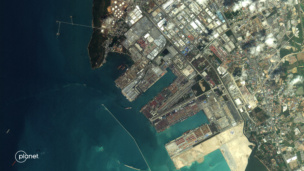Dust off that nameplate: Derek Tournear is taking his corner office back.
The former leader of the Space Development Agency (SDA) will return to his old job on April 17, following three months of administrative leave.
Tournear was placed on leave in mid-January after a bid protest by Viasat last year sparked an Air Force investigation into the procurement process. The procurement in question was for 10 Tranche 2 Gamma variant prototype space vehicles, which will provide the Proliferated Warfighter Space Architecture (PWSA) with fire support under the agency’s FOO Fighter program.
You can’t do that: The investigation’s head found that Tournear violated Procurement Integrity Act regulations by improperly assisting Tyvak Nano-Satellite Systems, a Lockheed Martin subsidiary, in winning its $254M contract. Tournear reportedly gave Tyvak advanced warning that its bid price was too high to be selected under the program.
As a result of Viasat’s lawsuit, the SDA temporarily removed Tournear, then revoked Tyvak’s award and reopened bidding—ultimately delaying part of the Tranche 2 architecture.
The bad and the ugly: While Tournear’s undoubtedly happy to get his job back, he’s reentering an agency plagued by questions about its efficacy in building the next generation of defense infrastructure in space.
In the months since his ousting, the SDA has undergone many reviews and reforms that highlight an agency in turmoil.
- In January, Air Force IG Lt. Gen. Stephen Davis initiated a review of the SDA, which included handing over full access to all SDA records.
- Shortly after, the SDA’s semi-independent status was called into question by the DoD.
- The Government Accountability Office criticized the SDA for being unable to prove the technical capabilities of the optical comms tech that would form the basis of the PWSA.
- In response, the agency altered its procurement process, extended ground testing timelines, and hired a dedicated integration contractor to ensure that each successive round of PWSA sats could take advantage of the tech demonstrated by earlier tranches.
- More recently, the Air Force debated whether to cancel a series of SDA contracts in favor of leveraging SpaceX assets, according to Sen. Kevin Cramer (R-ND).




